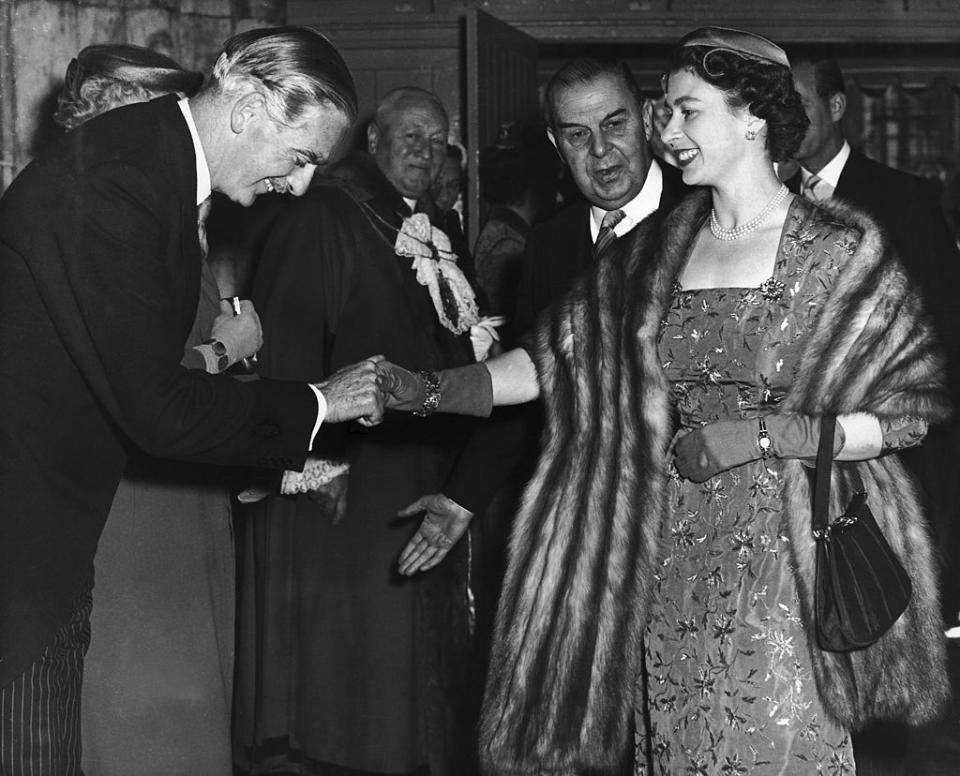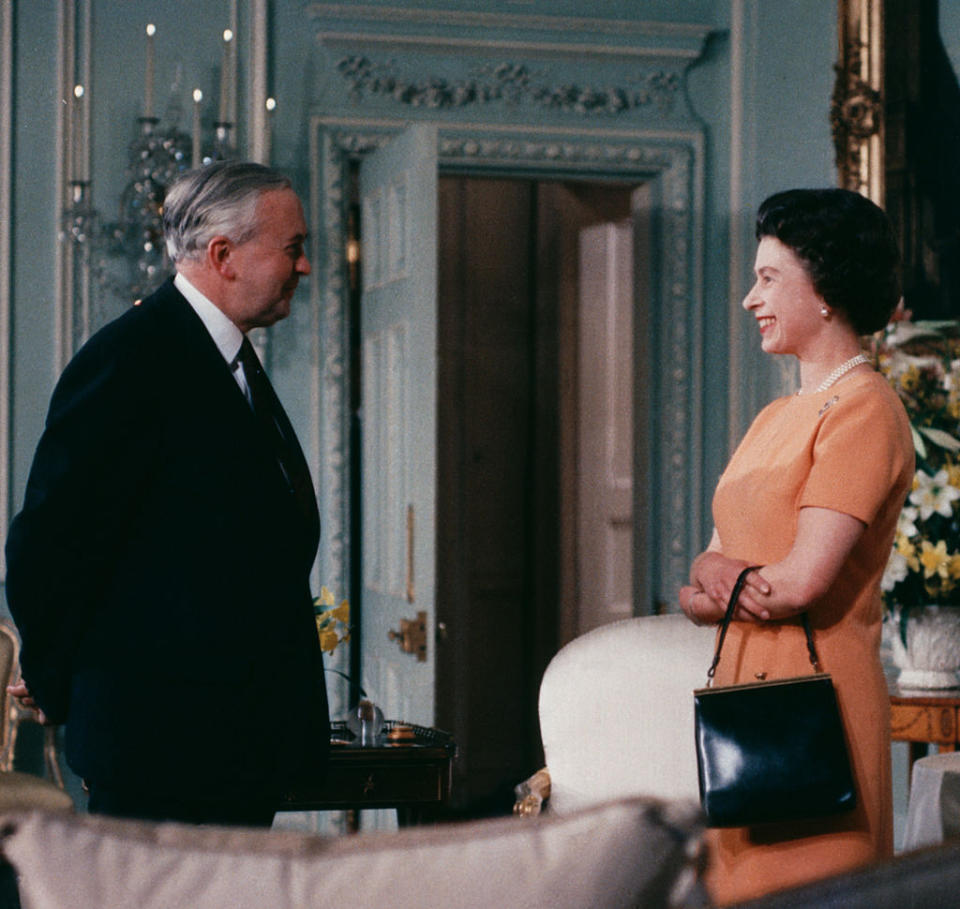From Churchill to May: The 13 prime ministers who've served during the Queen’s reign

We are about to get a new prime minister - and so is the Queen. Boris Johnson or Jeremy Hunt will be the 14th prime minister to serve under Elizabeth II.
Since coming to the throne in 1952, the Queen has worked with 13 different prime ministers and outlasted them all.
Some have stayed at Number 10 longer than others - one lasted less than a year, while another was there for more than 11.
Whatever the future holds for the next prime minister following Theresa May’s resignation, his first job will be to seek the Queen’s permission to form a government.


But the relationship won’t end there - the Queen has held a weekly audience with each prime minister throughout her reign.
Here are the 13 previous prime ministers to serve under the Queen.
Sir Winston Churchill (1951-1955)

Conservative Churchill was already in his second spell as prime minister when Elizabeth ascended the throne at the age of 25 following the death of her father, King George VI.
Churchill had served under her father twice, firstly between 1940 and 1945 when leading Britain to victory in the Second World War.
Asked years later to name her favourite prime minister, she replied: “Winston of course, because it was always such fun.”
Sir Anthony Eden (1955-1957)

Eden was more nervous around the Queen than Churchill in their weekly meetings, but she is said to have found him a sympathetic listener to her concerns.
His brief time as a Tory prime minister was defined by his much-criticised handling of the Suez Crisis, and he was later ranked one of the worst British leaders of the 20th century.
He resigned on the grounds of ill health just two months after ordering the end of the ill-fated Suez operation.
Harold Macmillan (1957-1963)

Following Eden’s resignation, Macmillan was picked to be the next prime minister by the Queen herself, after taking advice from Churchill.
The fallout from Suez was so severe that Macmillan, a Conservative, told her he couldn’t guarantee his government would last six weeks - he went on to be prime minister for six years.
He called the Queen “a great support, because she is the one person you can talk to”.
Sir Alec Douglas-Home (1963-1964)

Douglas-Home was prime minister for two days short of a year, as the public had lost faith with the Conservatives following the Profumo affair.
Like Macmillan, he was picked to be prime minister by the Queen as the Conservative Party had no formal mechanism in place to select a new leader.
She had already known Douglas-Home as he was a childhood friend of the Queen Mother’s.
Harold Wilson (1964-1970 and 1974-1976)

Wilson served two separate stints as prime minister under the Queen’s reign, and was her first Labour leader in Number 10.
The pair were said to have had a relaxed relationship - he described his visits as like “going to see mother”, and he even helped out with the dishes after royal barbecues.
The Queen went to Downing Street for his resignation dinner, something she has only ever done for one other prime minister, Churchill.
Sir Edward Heath (1970-1974)

The pair were said to have had a sometimes strained relationship because of their differences over European integration.
Years later, Conservative PM Heath famously fell asleep in front of the Queen during a dinner at Downing Street hosted by then-Prime Minister John Major.
James Callaghan (1976-1979)

The pair had a warm relationship, their weekly talks a welcome respite for Labour leader Callaghan from the numerous strikes bringing the country to a standstill.
On one occasion, the Queen dispensed with royal protocol and placed a flower in his buttonhole during a stroll around Buckingham Palace.
But Callaghan knew his place. “What one gets is friendliness but not friendship,” he once said.
Margaret Thatcher (1979-1990)

The longest of the Queen’s prime ministerial relationships, but also reportedly one of the frostiest. It was reported that the Queen found Thatcher’s capacity to lecture a little trying.
But Tory leader Thatcher, who was just six months older than the Queen, later wrote: “Stories of clashes between ‘two powerful women’ were just too good not to make up.”
However, the Queen attended Thatcher’s funeral in 2013, only the second time she has attended the funeral of a former prime minister. She was present at Churchill’s state funeral in 1965.
Sir John Major (1990-1997)

The pair had a strong relationship despite the political turmoil raging outside their weekly briefings, as Conservative PM Major’s cabinet was embroiled in a number of sex scandals.
He later said of their meetings: “We would sit down and we would talk about whatever was relevant. There’s nobody else ever there. The only other living soul present is often the Queen’s corgis, they tend to amass around the chair.”
After the death of Princess Diana a few months after his premiership was over, Major was appointed a special guardian to Prince William and Prince Harry with responsibility for legal and administrative matters.
Tony Blair (1997-2007)

Swept into Number 10 in a landslide election victory for Labour, Blair wanted to modernise Britain and didn’t always give royal protocol his full attention, leading to a standoffish relationship with the Queen.
At a banquet for the Queen’s 50th wedding anniversary, Blair made the blunder of revealing to an audience what she had said to him in their confidential meetings.
She is said to have sometimes considered Blair “unthoughtful” - he was the first of her prime ministers to move the day of their weekly meetings, so he could prepare for PMQs.
Gordon Brown (2007-2010)

An improvement on Blair, the discreet Brown was never likely to divulge details of their private conversations.
The Queen is said to have had a polite working relationship with Labour’s Brown.
On one occasion she jokingly imitated his Scottish accent, and for their final meeting after his resignation, the Queen reportedly invited his family along.
David Cameron (2010-2016)

Conservative leader Cameron wasn’t alive when the Queen ascended the throne, and was her youngest prime minister.
He was also the only prime minister to be related to the Queen - he is her fifth cousin, twice removed.
She first saw Cameron when he was just eight years old in a school production of Toad of Toad Hall at Eton with her son, Prince Edward.
In 2014, Cameron said he was “extremely sorry and very embarrassed” for breaking royal protocol by telling former New York mayor Michael Bloomberg that the Queen had “purred down the line” when he informed her that Scotland had voted against independence.
Theresa May (2016-2019)

The Queen was reportedly frustrated that May did not tell her of her plans for Brexit shortly after she became prime minister.
However, a royal butler told a newspaper the pair had a “bond” together, saying “they get on really well”.

 Yahoo News
Yahoo News 

